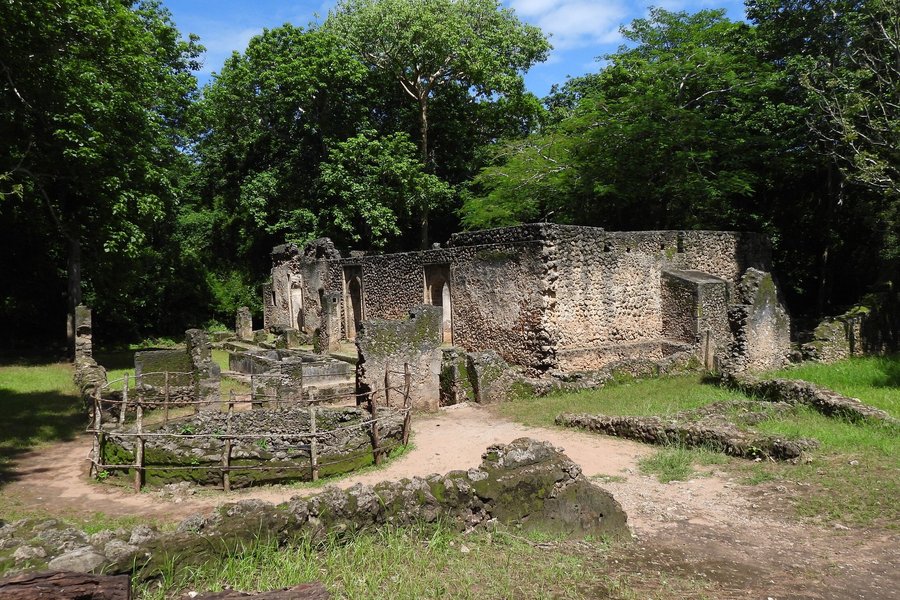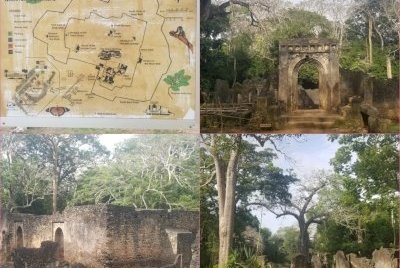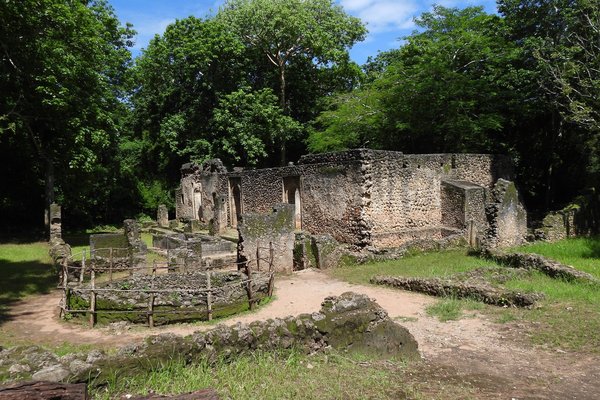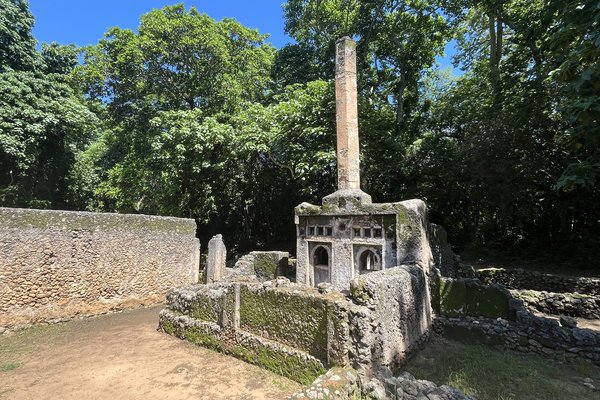Kenya
Gedi
The Historic Town and Archaeological Site of Gedi comprises the remains of a Swahili coastal settlement and maritime trade center that flourished between the 12th and 15th centuries.
The town, abandoned in the 17th century, had inner and outer city walls. Residential areas show segmentation between the social classes. Also, the distinct street layout, pillar tombs, the palace, and two Great Mosques have been preserved. Most buildings were made of coral stone from the Indian Ocean. The town was built 6km inland from the sea, possibly for defensive reasons.
Community Perspective: Go and see these atmospheric, overgrown ruins.
Site Info
Official Information
- Full Name
- The Historic Town and Archaeological Site of Gedi (ID: 1720)
- Country
- Kenya
- Status
-
Inscribed 2024
Site history
History of Gedi
- 2024: Inscribed
- Inscribed
- Type
- Cultural
- Criteria
- ii
- iii
- iv
Links
- UNESCO
- whc.unesco.org
- Related
-
- en.wikipedia.org — Extensive wiki page on the Ruins of Gedi
- gederuins.co.ke — Virtual Tour
All Links
UNESCO.org
- whc.unesco.org — whc.unesco.org/
Related Resources
- en.wikipedia.org — Extensive wiki page on the Ruins of Gedi
- gederuins.co.ke — Virtual Tour
Community Information
- Community Category
- Archaeological site: Civilizations of Sub-Saharan Africa
Travel Information
Recent Connections
-
Perfect Inscriptions
2024 -
Pillars
"Stone "pillar tombs" are a distinctive… -
Uncovered using Lidar
By the Zamani projectSee www.zamaniproj…
Connections of Gedi
- Geography
-
-
Swahili culture
"an important and well-researched Swahili settlement" (AB ev)
-
- History
-
-
Fusion
"The fusion of African and Islamic beliefs can be seen in the layout of the city, in the distinctive architectural forms of its coral stone buildings, in the decorative details of its mosques and tombs, and in the technical know-how of the wells and hydraulic systems that sustained a large urban settlement over centuries of occupation." (OUV) -
Chinese Porcelain in Africa
"with the mosques and tombs embellished by carvings and inset with Chinese porcelain" (AB ev)
-
- Architecture
-
-
Coral Masonry
"Local materials such as coral stone, lime, coconut palm, mangrove poles and coral rag were used in the construction of the houses, tombs, and mosques." - AB Evaluation
-
- World Heritage Process
-
-
Perfect Inscriptions
2024
-
- Religion and Belief
-
-
Notable mosques
"The site includes a number of notable structures such as a palace, mosques, large residences, pillar tombs, and clusters of private dwellings" (AB Ev)
-
- Human Activity
-
-
Irrigation and drainage
"The street layout and sophisticated water management system of Gedi are distinctive characteristics." (AB Ev)
-
- Constructions
-
-
Tombs
"The site includes a number of notable structures such as a palace, mosques, large residences, pillar tombs" (AB ev) -
Latrines
"toilets in residential buildings is a notable element" (AB ev) -
Pillars
"Stone "pillar tombs" are a distinctive type of Swahili Coast architecture found at Gedi as well." (wiki)
-
- Timeline
-
-
Built in the 10th century
"Occupied from the 10th to the 17th centuries, Gedi flourished between the 12th to 15th century" (AB ev)
-
- Science and Technology
-
-
Uncovered using Lidar
By the Zamani project -
Archaeological potential
"(...) the vegetated areas between the inner and outer walls are considered to have the potential to contain important archaeological evidence about the spatial arrangements and social hierarchies of the Swahili town." "Gedi has a high potential for future archaeological research that could further elaborate on the urban structure of the city, the morphology of Swahili cities, and the finer operations of the trade networks." (AB Ev)
-
- Visiting conditions
-
-
Foreigner prices
500 Ksh for non-residents, 100 for Kenyans
-
News
No news.
Recent Visitors
- AmyAbroad
- amychemu
- Mihai Dascalu
- Carlos Sotelo
- Luis Filipe Gaspar
- Roman Bruehwiler
- Thomas van der Walt
Community Reviews
Show full reviews
The Historic Town and Archaeological Site of Gedi gained World Heritage status last year – this is the first review since. Known as the Gedi Ruins, they are quite a popular tourist attraction, probably because of their convenient location, almost right at the main road between Mombasa and Malindi along the Kenyan coast. I arrived at Gedi junction by matatu, and jumped on the back of a motorbike for the final 1.5 km to the ruins. Like at all other sites nowadays in Kenya, there’s some commotion at the entrance since they will only allow online payments, which are hard to manage as a foreigner. So there are middlemen lingering about who, for a small commission, will buy a ticket for you via their phones. The entrance fee for foreigners is 500 KSh (3.5 EUR), I think it is still the non-WHS rate (there’s no plaque yet either).
I dodged the guides and went on my way alone. Signage is poor, but that doesn’t really matter: just remember that there is an inner zone where all the monumental buildings are and an outer zone with mostly forest and a wall here and there. Together, they form two rings. Beforehand, I had read the Tripadvisor reviews, which almost without exception rave about guides feeding the resident Sykes’ monkeys bananas – fortunately, this practice seems to have been halted, there are “Do not feed the animals” signs and I only saw a few monkeys from afar.
The history of Gedi is …
Keep reading 0 comments
Gedi is to be nominated very soon and I wouldn't be surprised if it slides through even though the visitor centers are all "Kenyan style" half built and then left forgotten. It can do without so just seeing the ruins is enough.
You arrive at the main gate where you can pick 3 tickets. If you are into snakes and butterflies stolen from the nearby forest then be my guest. They also guilt you into thinking you are supporting the local community this way. What you could do it hire a guide for the Gedi ruins alone. I chose not to because Gedi is like Angkor Wat and you explore overgrown ruins on your own. Zoe Croft was not going to miss out on this one!! (Don't want a sidekick for that!)
There are two areas which totally will take about an hour to see. It is true that you won't understand much of what you see but I felt that I don't need to know. "Here used to be a mosque" is enough for me. Very picturesque.
I do recommend to inscribe the property but I have to think if it should connect with Lamu in some way. It is also coral buildings and from the same time period but it is ruined instead of lengthy cultural use.
Keep reading 0 comments


